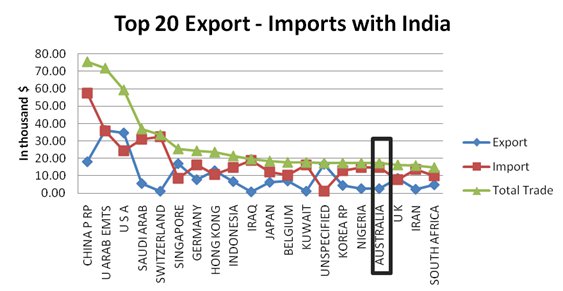Australian Prime Minister Julia Gillard is on her second visit to India,and the first after she took over as the Prime Minister.
Visiting in 2009, she was described as the ‘silver lining’ in Kevin Rudd’s cavalcade.
Critics believe it was a visit that demanded more than the mere scaling up of India-Australia relationship to a ‘strategic one’.
Advertisement
Rudd’s trip to India was against the background of an outburst of so-called "curry bashings" of Indian students in Melbourne and the archaic position of the Labor Party on non-supply of uranium to India which was and continues to be a non-signatory to the NPT.
All is not well this time round either.
India still holds grievances about non-supply of uranium, displayed by Manmohan Singh’s absence at the CHOGM in Australia last year.
Ever though Gillard has able to change the party’s position on supply of uranium it is seen to be too little and too late with India already securing nuclear material supply from eight other countries including Russia and Canada.
The number of Indian students going to Australia has steeply declined with 26.8% less students in 2011 from 2010. Critical to note that this decline is the largest among Indian students compared to other nationalities in spite of Australian constant effort to appear as a non racist society
Trade and Economy, increasingly being regarded as the harbinger of bilateral relations, doesn’t paint a very rosy picture either.
Advertisement
While India continues to be the fourth largest export destination for Australia, Aussies don’t feature in the top 15 countries (see figure 1) on India's export import radar. So much so that Australia’s share of total trade to India has been on a decline from close to 2.9 % in 2009-2010 to 2.1% now (Figure2).
In addition the Comprehensive Economic Partnership Agreement (CECA) hasn’t reached fruition even though it was on the table well before Rudd's trip to India. Thus the impression that trade and economy are guiding the two countries seem to be certainly wishful thinking with much more to be achieved.
Given the current scenario, what is in the best interests of both India & Australia?
Global dynamics of power are shifting. India’s international popularity is only partly about India. China's double digit growth over decades have increased concerns on how will it yield this power.
China leading by its ‘string of pearls’ policy has already started building military bases extending from the Chinese mainland to the Port of Sudan.
To counter this the US stationed its troops in Australia which was heavily criticised by the Chinese regime leading to strained ties last year. This in an environment when the US which has been Australia's traditional support in Asia is staggering under record debt, noxious politics and a growing disillusionment with adventures abroad.
It is but natural for those worried about the rise of China to engage, empower and invest hopes in the rise of a congenial other Asian giant.
This is where the key strategic quadrilateral alliance comes into place.
One of Rudd’s pet programmes the Asia Pacific Community (APC) which involved India, Japan, USA and Australia is already underway but the institutions to build this community are missing. Without institutions, the APC will be reduced to a meeting point of ASEAN elites with identical problems and nothing more.
The Asian Identity which is the main motive behind APC & ASEAN cannot become a reality without a committed participation from Australia and India. Working together on APC and other forums like the G20 and the UN can help both nations secure a fair and mutually acceptable deal. With our background of having a strong, vibrant, secular and multicultural democracy which faces similar challenges and opportunities there is a scope for collaboration like never before although the window of opportunity is small.

Figure 1(Source: Ministry of Commerce and Industry, GoI)

Figure 2(Source: Ministry of Commerce and Industry, GoI)
Discuss in our Forums
See what other readers are saying about this article!
Click here to read & post comments.
2 posts so far.